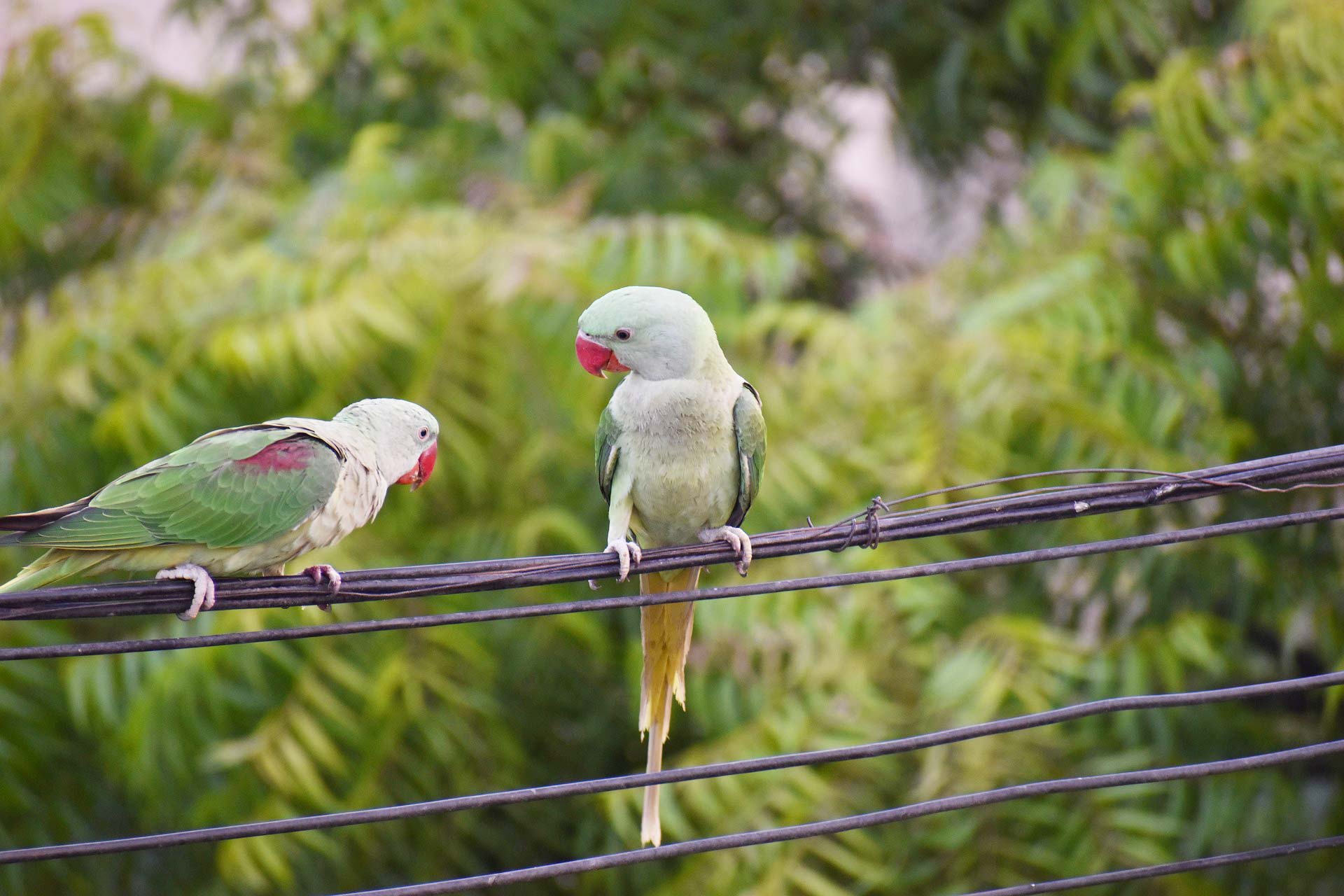| Principal Investigator: | Dr. Jim Groombridge, Chair of ParrotNet (COST Action ES1304) |
|---|---|
| Co-Investigators: | Dr Diederik Strubbe (Vice-Chair), and Dr Simon Tollington |
| Dates: | 24th October 2013 – 23rd October 2017 |
| Funding: | European Science Foundation (European Cooperation in Science and Technology) |
ParrotNet, led by Dr Jim Groombridge at DICE within the School, is a research network of over 80 active researchers, both natural and social scientists as well as policy-makers, involved in understanding the impacts of invasive parakeets within Europe. The project also hosts the European Monitoring Centre for Invasive Parrots, a virtual online centre that consolidates information on the spread and distribution of invasive parrots. The team are hoping to understand why parakeets are such successful invaders and how they can predict their agricultural, ecological, economic and societal impacts.
One of a number of parrot species now found in Europe, the rose-ringed parakeet is listed amongst the top 100 worst alien species in Europe, and since the 1970s has rapidly established itself in over 100 cities across the continent and beyond. They have begun to pose problems in urban and rural areas such as disturbance to humans (including potential to transmit diseases to livestock and humans), competition with native wildlife and, increasingly, as an agricultural pest, already prompting changes in national policies. Worryingly, farming practices that adapt to global climate change and a warmer Europe facilitate the continued expansion of parakeet populations, amplifying the problems parakeets pose for European agro-economy. More generally, a temporal, spatial and social perspective of biological invasion is crucial to address, understand and solve the ‘alien species problem’ but is lacking. ParrotNet aims to (i) better understand why some species such as parakeets are highly successful invaders, (ii) harmonise methodologies to predict agricultural, economic, societal and ecological impacts across Europe, and the means to mitigate them, (iii) create a virtual European Monitoring Centre for all invasive parrot species, and (iv) transfer results to policy and society. ParrotNet (COST Action ES1304) fulfils the EU 2020 Biodiversity Strategy, the Convention on Biological Diversity and Syracuse Charter recommendations on invasive species.
Further links:
http://www.cost.eu/COST_Actions/essem/Actions/ES1304

